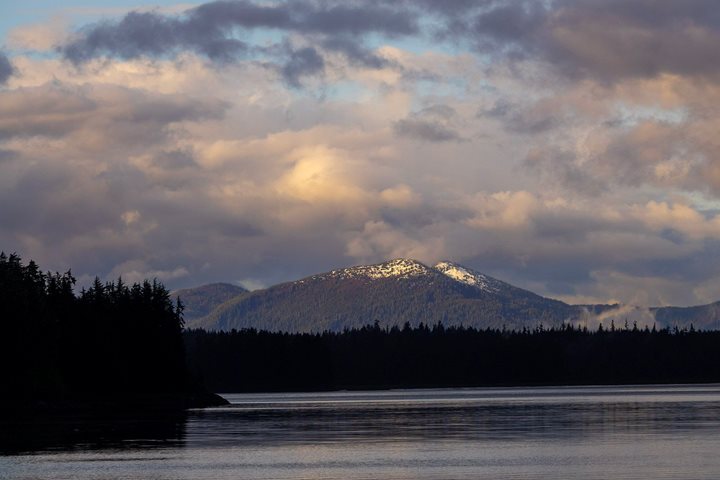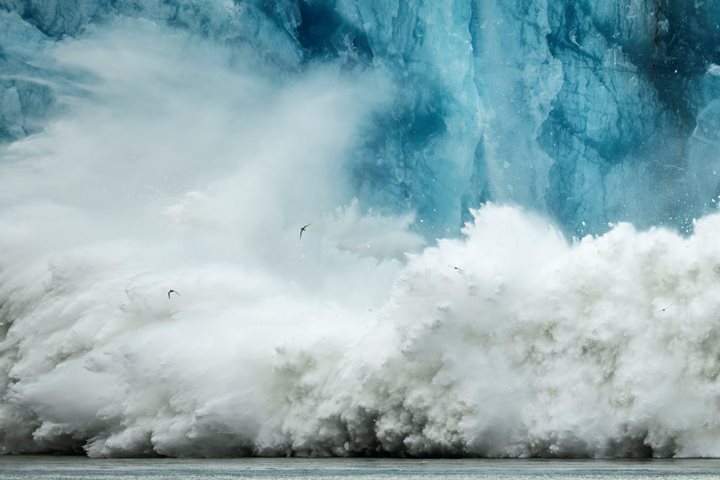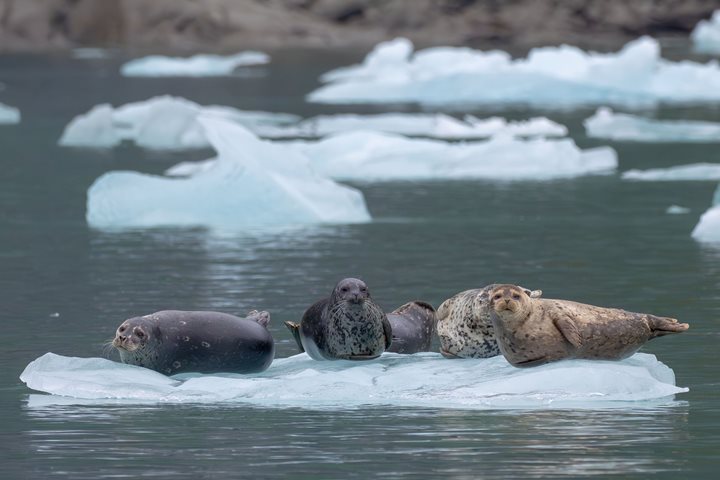An authentic Alaskan experience includes rain; today, we had an authentic experience for twenty-four hours straight. Our morning hikes took us through a stunning temperate rainforest, made possible by the liquid sunshine that characterizes this region. Everything dripped, and waterfalls increased in volume by the hour. The afternoon included a watercolor session led by Kimberly Wood, and a presentation on whales by Erica Wirth. Five intrepid guests signed up for a Zodiac tour in the continuous downpour, and their bravery was rewarded — they saw at least fifteen bald eagles, nosed up a creek, waved to curious harbor seals, and viewed National Geographic Sea Lion amidst literal mist. Rain creates this place, and today we soaked up that reality.
- Daily Expedition Reports
- 25 Aug 2024
Ideal Cove and Thomas Bay, 8/25/2024, National Geographic Sea Lion
- Aboard the National Geographic Sea Lion
- Alaska
Zoey Greenberg, Naturalist
Zoey grew up in Bellingham, Washington, where the Salish Sea and temperate rainforest were powerful catalysts in sparking her love of the coast. Her studies took her to tall ships in the eastern U.S. where she taught kids how to haul sail, sing sea s...
Read MoreShare Report
Alaska Escape: LeConte Bay, Wrangell and Misty Fjords
VIEW ITINERARYRelated Reports
5/29/2025
Read
National Geographic Sea Bird
Endicott Arm
Dawes Glacier, located at the head of Endicott Arm in Southeast Alaska, is an active tidewater glacier in the remote Tracy Arm-Fords Terror Wilderness Area. Reaching the glacier requires a 30-mile journey through a narrow fjord lined with sheer rock walls rising over 3,000 feet. These cliffs are veined with waterfalls and often blanketed in mist. Throughout the fjord, remnants of the glacier float in the form of icebergs. The glacier feeds cold, silty meltwater into the fjord, giving the water a distinctive milky-green hue and supporting a rich marine food web. Harbor seals were hauled out on ice floes near the glacier. Gulls and Arctic terns were actively feeding, likely drawn by the small fish and plankton concentrated by the glacial outflow. The glacier calved several times, hurling large chunks of ice across the water’s surface, sending the birds fleeing. The sound of the ice hitting the water echoed off the steep rock walls that rise thousands of feet on either side.
5/27/2025
Read
National Geographic Sea Bird
Dawes Glacier in Endicott Arm
We could not have asked for a better way to end the expedition. Our last day was amazing! Visiting Dawes Glacier in Endicott Arm was a highlight with its crystal-blue ice and resting harbor seals floating by on the ice. In the evening, we even got to see a couple of humpback whales off the bow of the ship. We ended the day by watching images of the beautiful moments created on our expedition during the famed guest photo slideshow.







